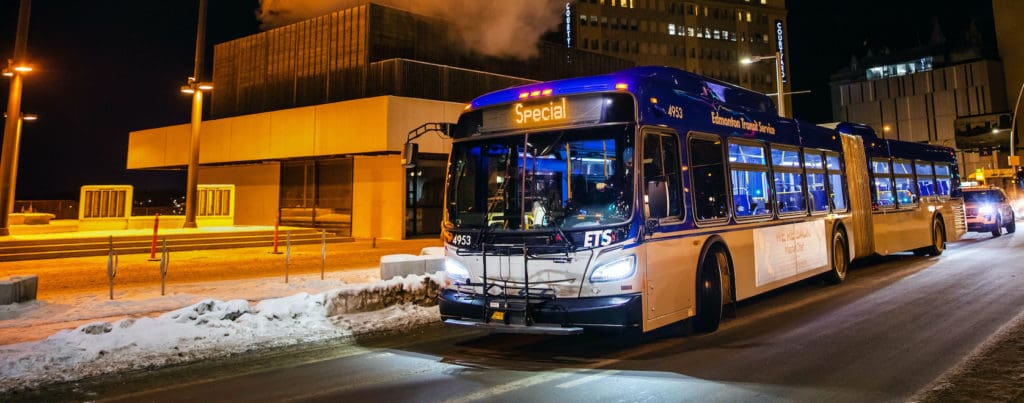Community collaboration protects people during extreme weather
By Jasmine Salazar
An extreme cold snap, with temperatures dropping to the -30s, is just another reason for people to stay indoors.
Add windchill and the outdoors become even more treacherous for Edmontonians experiencing homelessness. These winter conditions can be life-threatening and require a highly coordinated and responsive plan to ensure everyone has a safe and warm place to go.
With many indoor public spaces closed due to COVID-19 restrictions, people experiencing homelessness don’t have access to sites that would typically provide respite from the cold. And with fewer people out and about due to COVID, there is a risk of someone needing assistance not being spotted.
The city’s homeless-serving sector—comprised of the City of Edmonton and more than 25 system and agency partners—already coordinates the Sector Emergency Response, an emergency response plan that operates when weather conditions worsen and increase the risk of exposure for people experiencing homelessness by expanding supports to keep them safe from the elements.
But the latest drop in temperatures intensified the need for additional supports and triggered the activation of the city’s Extreme Weather Protocol, a set of actions that complement the existing Sector Emergency Response.
Additional measures in the protocol included removing transportation barriers to ensure people were getting to the shelters safely, as well as increasing shelter capacity through additional beds and supporting supplementary temporary accommodation locations.
This year’s Extreme Weather Protocol included the activation of two dedicated Edmonton Transit Service buses running overnight bus routes—a north loop and south loop—between emergency shelters, transit centres and several other key locations in the city to ensure safe transportation to shelters.
Staffed with outreach workers from various local agencies, who were on board all night supporting riders, the buses ran overnight transporting people to one of the city’s shelters. Aside from regularly scheduled stops, buses also stopped if they saw someone out in the cold, inviting them on and providing assistance.

On the first night of the activation, approximately 60 people used the overnight bus to get to shelters, with that number more than doubling to nearly 141 a night as the extreme cold persisted and more people learned about the service. An additional two buses were added (one on each loop) to increase frequency and respond to higher than expected demand.
While there continues to be capacity at shelters, extra beds were also added as a contingency to ensure beds are always available, including:
- Tipinawâw (located at the Edmonton Convention Centre), operated by multiple agencies, where 50 spaces have been added for a total of 350 beds
- Trinity Lutheran Church, operated by the Mustard Seed, has opened up 40 spaces
- Al Rashid Mosque, operated by volunteers of the Canadian Islamic Center, has opened 72 spaces
These spaces are in addition to the existing temporary shelters in operation included Tipinawâw (as mentioned), CESSCO (Mustard Seed) and Moravian Church.
Edmontonians have also stepped up to support their vulnerable neighbours through the cold snap. Bissell Centre and partner agencies put out an urgent call asking for winter clothing for guests of Tipinawâw. Donations poured in from across the city providing essential items. The response from concerned citizens wanting to help was so great that the closet filled up and the call out changed to focus on the most critical items – men’s winter clothing and gloves. Donations are still being accepted Monday through Saturday, 10am to 4pm. (Visit Bissell Centre for more details.)
The City, Homeward Trust and community partners work together to determine when it’s appropriate to activate the City’s Extreme Weather Response. They consider Environment Canada weather warnings, existing capacity of Edmonton’s emergency shelter system and emerging concerns expressed by front line staff who regularly interact with people experiencing homelessness.